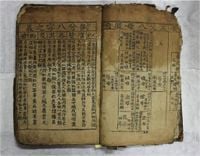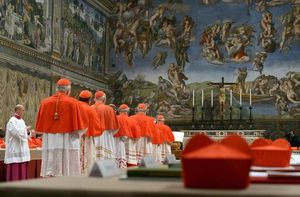The National Heritage Administration announced on April 29, 2025, that it has rescinded the designation of 'Daemyeongnyul' as a treasure through a government notice. This marks the first instance where a nationally designated cultural property, such as a national treasure or treasure, has had its designation revoked. The National Heritage Administration explained that this decision comes as a follow-up measure considering the flaws in the designation process related to the authenticity of the item.
'Daemyeongnyul' is an important resource that serves as a model for Joseon Dynasty criminal law and is a legal system from the Ming Dynasty of China, believed to have been published in 1389. Recognized as a rare book with no known copies, it was designated as a treasure in 2016 due to its significance for studying Joseon Dynasty law and history. However, just four months after its designation, in November of the same year, it was confirmed to be a stolen item during a police investigation into cultural property theft across the country.
According to the National Heritage Administration, 'Daemyeongnyul' was an item possessed by the Yooksin Shrine in Gyeongju, Gyeongsangbuk-do. In 1998, the Yooksin Shrine reported to a local government that 235 items, including ancient books and editions containing 'Daemyeongnyul', had been stolen. In 2011, they informed the National Heritage Administration (then the Cultural Heritage Administration) of the theft.
The investigation revealed that A, who operated a private museum, purchased 'Daemyeongnyul' from a dealer who handled stolen goods for 15 million won in 2012. A falsely claimed that the item was inherited from his home when applying for its treasure designation. Ultimately, A was put on trial for violating the Cultural Heritage Protection Act, and the Supreme Court confirmed a sentence of three years of imprisonment.
The National Heritage Administration determined that there was a significant flaw in the origin of the item submitted by the applicant at the time of treasure designation, leading to the decision to revoke the designation last month. Even if the treasure designation is revoked, the value of the cultural heritage does not diminish. While the designation is lifted if it is judged that the cultural heritage has lost its value, in the case of 'Daemyeongnyul', the value of the heritage remains intact.
It is anticipated that once ownership is clearly established, 'Daemyeongnyul' may be redesignated as a treasure. The National Heritage Administration stated that they will thoroughly review the origin and storage circumstances of cultural heritage and strengthen the deliberation of the designation by the Cultural Heritage Committee.
'Daemyeongnyul' is a crucial document that reflects the criminal law of the Joseon Dynasty. It is a complete criminal code compiled in 1367 and completed in 1373 by Taejo Joo Won-jang of the Ming Dynasty, just one year before he ascended to the throne. During the Joseon Dynasty, the Gyeongguk Daejeon, which was the basic code for the operation of state affairs, did not include criminal law, so the state was governed based on 'Daemyeongnyul' when executing criminal cases.
This case highlights the importance of authenticity and provenance in cultural heritage designations. The revocation of 'Daemyeongnyul' serves as a reminder of the need for rigorous verification processes to ensure that cultural properties are rightfully designated and preserved.
As discussions continue regarding the future of 'Daemyeongnyul', the National Heritage Administration is committed to enhancing the integrity of its designation processes. The agency aims to prevent similar occurrences in the future by implementing stricter guidelines and oversight in cultural heritage evaluations.
The implications of this decision extend beyond 'Daemyeongnyul' itself, raising questions about the broader system of cultural heritage protection in South Korea. Stakeholders in the cultural heritage community are now calling for increased transparency and accountability in the designation process.
In light of this incident, experts emphasize the need for continued vigilance against the illicit trade of cultural artifacts. The theft of 'Daemyeongnyul' is not an isolated case; it reflects ongoing challenges in the preservation of cultural heritage in an era where illegal trafficking remains a significant threat.
As the National Heritage Administration moves forward, the focus will be on restoring trust in the system and ensuring that cultural treasures are safeguarded for future generations. The story of 'Daemyeongnyul' serves as a critical case study in the complexities of cultural heritage management and the importance of ethical stewardship.
In conclusion, the revocation of 'Daemyeongnyul's' treasure designation underscores the necessity for thorough provenance checks and ethical practices in the cultural heritage sector. As authorities work to rectify past mistakes, the future of this significant piece of history remains uncertain, yet hopeful for its rightful place in the cultural narrative of Korea.




